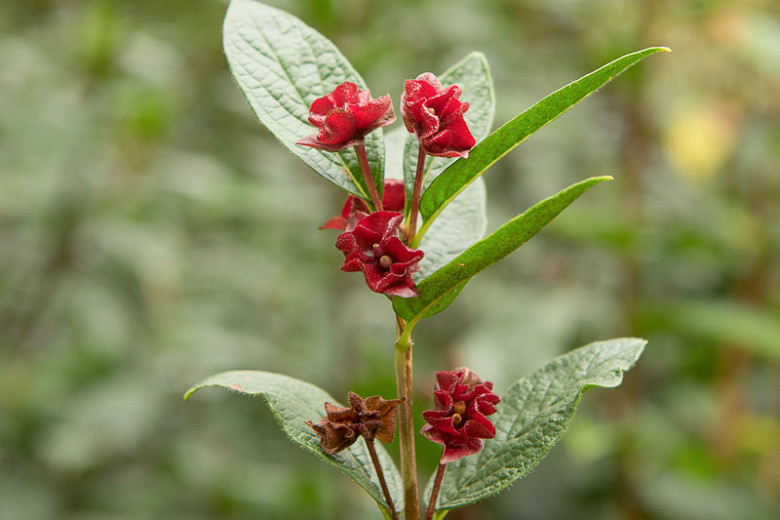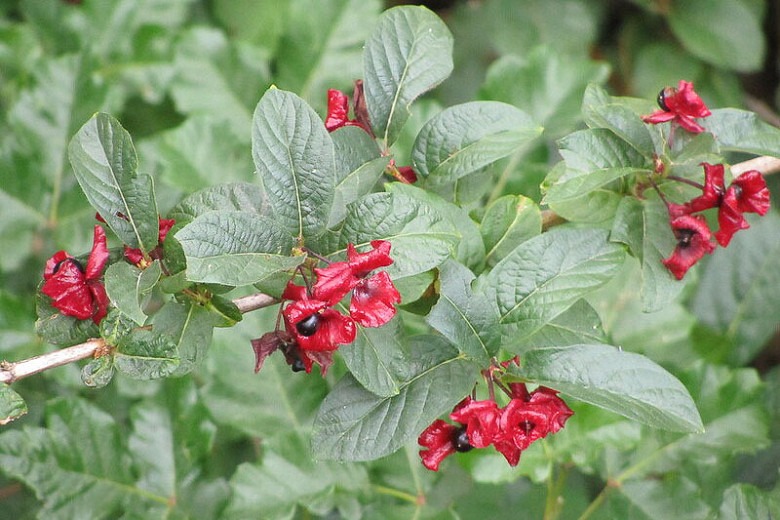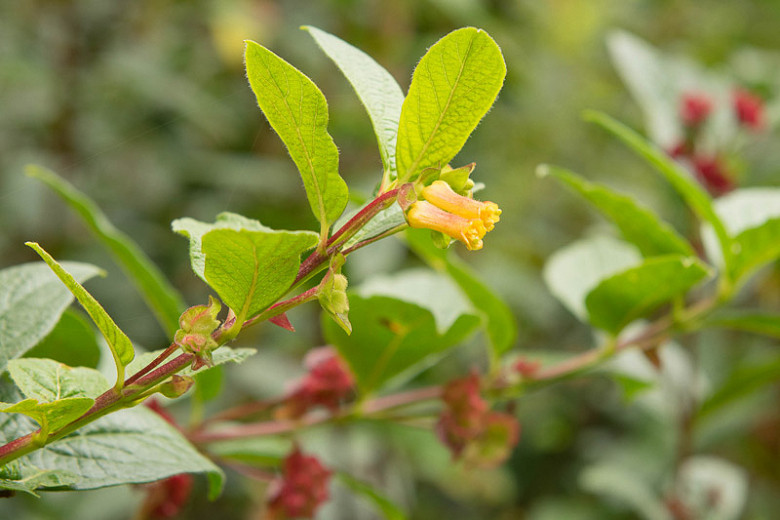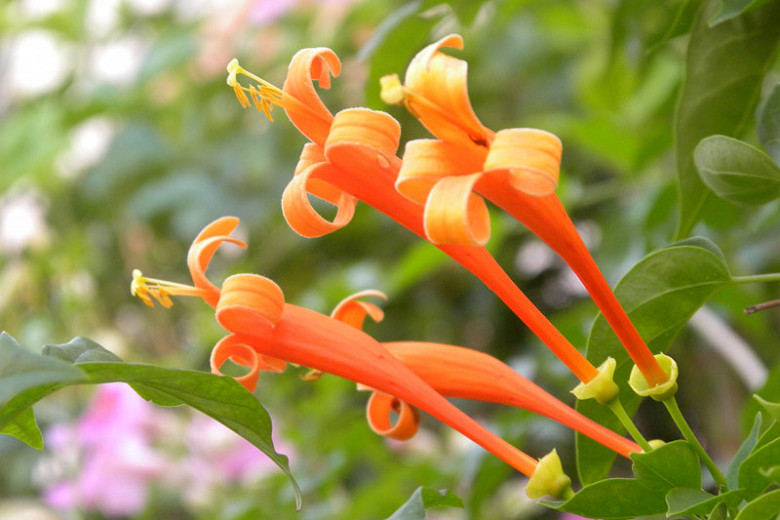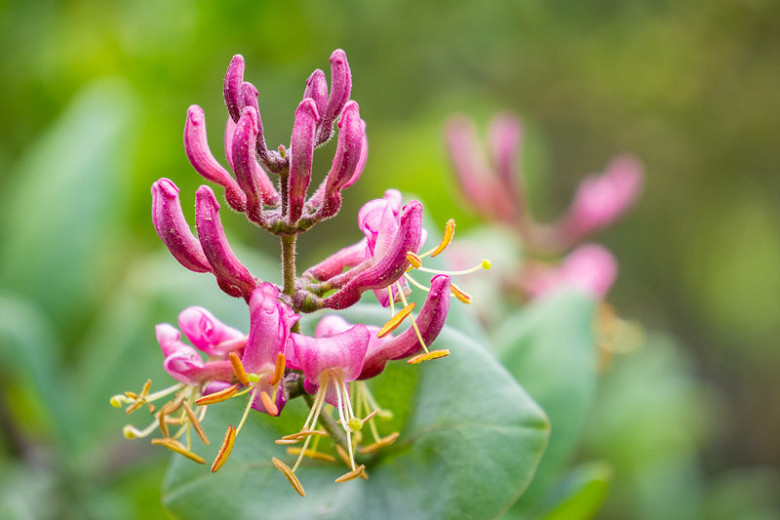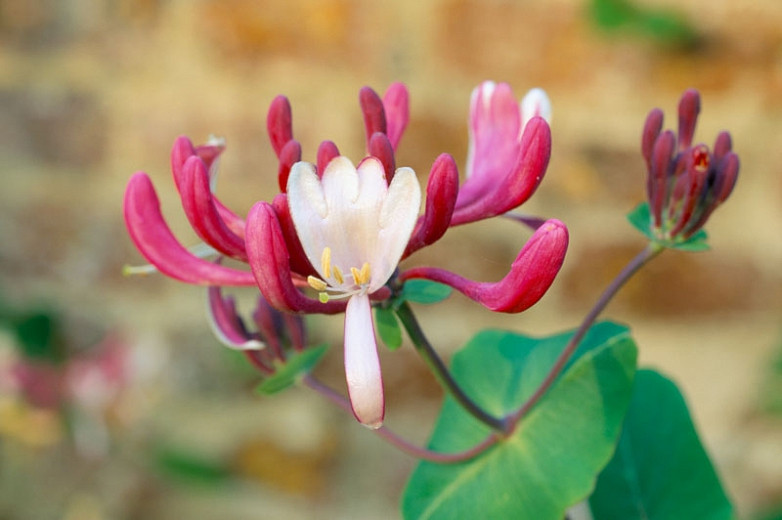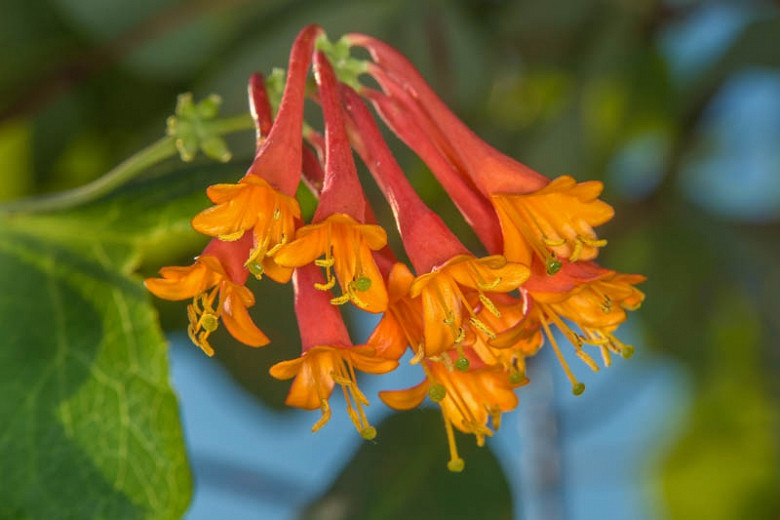Lonicera involucrata (Twinberry Honeysuckle)
Attractive and pleasing to the eye, Lonicera involucrata (Twinberry Honeysuckle) is a long-lived deciduous shrub with sturdy shoots covered with opposite, bright green, elliptical leaves, 5 in. long (12 cm). In early spring to late summer, depending on locations, small, dainty yellow flowers, 1 in. long (2.5 cm), appear in dangling pairs surrounded by two leafy bracts. The bracts turn from green to a brilliant dark red in late summer as fruits ripen. The flowers give way to pairs of small plump purple or black berries that are unpleasantly bitter tasting. Great for wildlife, the flowers are a source of nectar for hummingbirds and butterflies. The berries are eaten by bears, small mammals, game birds including quail and grouse, and songbirds. Native to northern and western North America, Twinberry Honeysuckle grows in moist forest openings, swamps, streamsides, and meadow edges, ranging in elevation from sea level along the Pacific Coast to subalpine sites in the mountains. Twinberry Honeysuckle is a valuable shrub for streambank erosion control and restoration of riparian areas, swamps, bogs, moist woodlands, scrub-shrub wetlands, and sandy coastal areas within its native range. Like many honeysuckles, Twinberry Honeysuckle is also an attractive garden ornamental. Its flowers are most welcomed in summer when many other plants have finished blooming.
- Grows up to 6-15 ft. tall (180-450 cm) and 6-10 ft. wide (180-300 cm).
- A full sun to part shade lover, this plant is best grown in moist, organically rich, well-drained soils. While tolerant of full sun, Twinberry Honeysuckle is most commonly found under shady conditions in its native habitats.
- Excellent choice for beds and borders, hedges and screens, erosion control.
- Low maintenance, this plant is generally pest and disease free. Keep an eye out for aphids, serpentine leaf miners, and scales.
- Propagate from seed or cuttings.
- The bitter ripe berries may be mildly toxic or poisonous to humans.
- Lonicera involucrata is found from southern Alaska east across boreal Canada to Quebec, and south through the western United States to California, and to Chihuahua in northwestern Mexico.
Requirements
| Hardiness | 4 – 10 |
|---|---|
| Plant Type | Shrubs |
| Plant Family | Lonicera – Honeysuckles |
| Exposure | Full Sun, Partial Sun |
| Season of Interest | Spring (Early,Mid,Late)Summer (Early,Mid,Late)Fall |
| Height | 6' – 15' (180cm – 4.5m) |
| Spread | 6' – 10' (180cm – 3m) |
| Spacing | 72″ – 120″ (180cm – 300cm) |
| Water Needs | Average |
| Maintenance | Low |
| Soil Type | Chalk, Clay, Loam, Sand |
| Soil pH | Acid, Alkaline, Neutral |
| Soil Drainage | Moist but Well-Drained, Well-Drained |
| Characteristics | Showy, Fruit & Berries |
| Native Plants | United States, Alaska, California, Midwest, Michigan, Wisconsin, Pacific Northwest, Idaho, Oregon, Washington, Rocky Mountains, Colorado, Montana, Utah, Wyoming, Southwest, Nevada, Arizona, New Mexico |
| Tolerance | Deer |
| Attracts | Birds, Butterflies, Hummingbirds |
| Garden Uses | Beds and Borders, Hedges and Screens |
| Garden Styles | Informal and Cottage, Prairie and Meadow |
